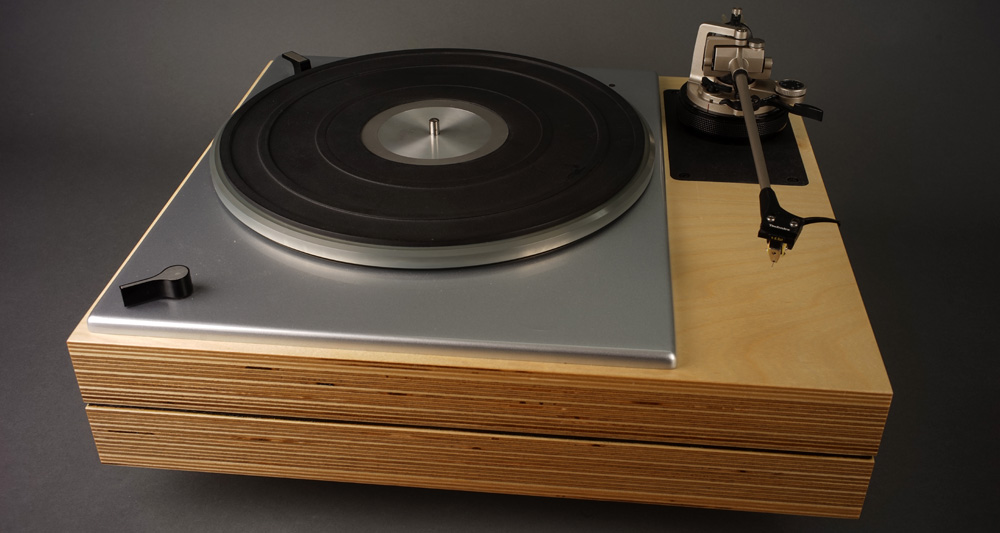My Turntables
Copyright 2016 © Troels Gravesen
If you are into the world of turntables, cartridges and
vinyl records, this page will probably tell you nothing new. You won't
find any overly fancy spinners on 100 kg concrete tables or massive
aluminum pillars that could carry a truck. I've just put down these lines
and images to tell you why I love vinyl records and how I ended up with
a Lenco L75 turntable, Morch DP8/12" tonearm, a couple of van den Hul
cartridges and not least the vdh The Grail phonostage. All
these components play a vital role in getting the best out of the
grooves.
Making sound from tracking a needle in a plastic groove may
seem ludicrous these days! Yet, nothing has given me more pleasurable
hours than this thing of the past. It's been 137 years since Edison
invented the phonograph and it's amazing this technology can still be refined
and taken to levels where it can compete with the best modern digital
technology. At least some of us think it can, others are more skeptical
and again other will claim the turntable pure nostalgia. So be it.
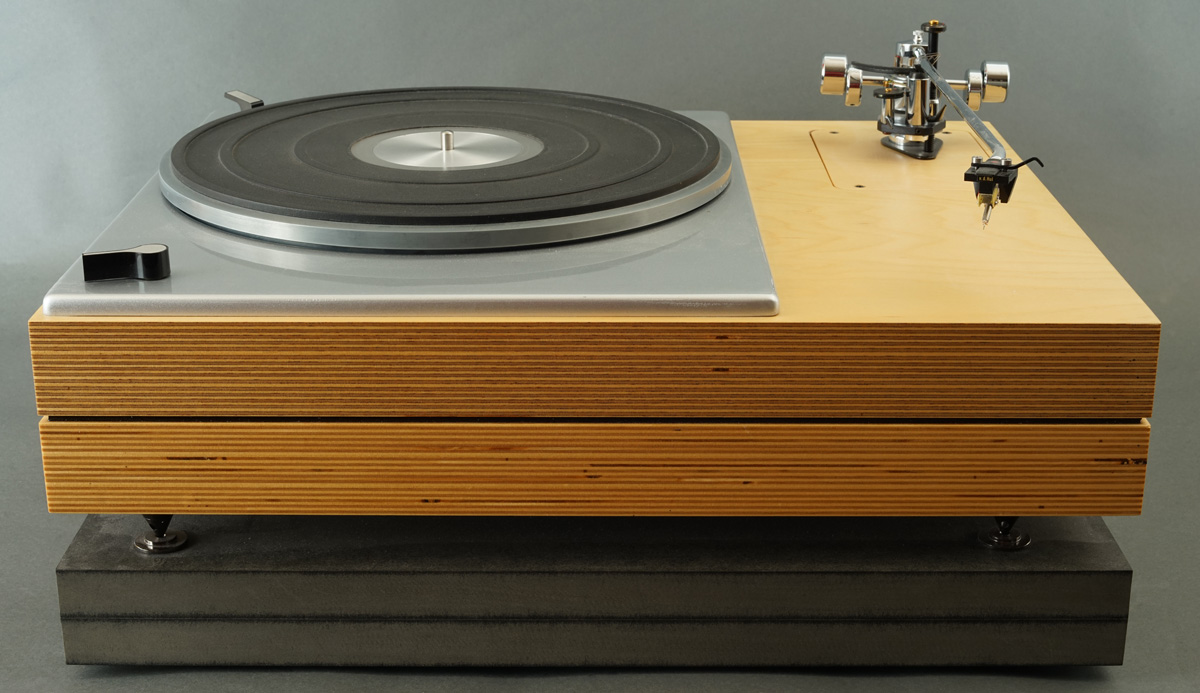
Apart from the Nienties, where I was busy doing other things, I've been listening to vinyl all my life. Digital aficionados may think I've become addicted to the noise. The important thing is that we have a media enabling us to enjoy our addiction to music, something that seems to have been around long prior to recorded history. Click image below for clues to our addiction.
Below you will find a chronological
presentation of the turntables I've had over the years. Nothing fancy
until recently. In the 70-80-90'ties I simply didn't prioritise this
part of the system to the level I do today and during the Nineties in
fact stowed away my turntable and vinyls in the attic, only listening to
CDs.
A friend in Australia persuaded me to give my vinyls a second
listen and so I did. Even on a modest ProJect turntable there was
something I didn't find on CDs. And it was great fun listening to all my
old records again - fortunately not sold to a secondhand store.
Getting my second Garrard 401, some 30 years after the first one, with a
Jelko arm and Dynavector XX2 mkII cartridge brought the play-back level
to heights I never experienced before. Another classic, the Thorens
TD124 mkII, was acquired. Which is best is a tricky
question as they both hold intrinsic qualities rarely found in modern medium
price range turntables. The thing is that they are both driven by a
idler wheel, well, the TD124 not entirely, having a small belt driven
wheel driving the idler wheel.
A friend of mine suggested trying a Lenco L75 also. Thousands, probably
tens of thousands, of Lencos were sold in Europe and are/were easy to find at secondhand stores for
less than 50 EUR. Prices have risen but L75s are still
available on eBay in quite high numbers at reasonable cost. If you can't
find L75, go for L78, but not L-later like L85 being a belt driven
turntable.
A thoroughly refurbished L75 with a Jelko arm has been seen at 2,000 EUR. Not
totally unreasonable to my mind, because a restored L75 is a gem. The
original tonearm is a throw-away, but good new tonearms are available at
reasonable cost (e.g. Jelko) and getting a high-end turntable for a fair amount of
money is within reach. The L75 is a diy thing because you need to be
able to take it apart for cleaning, adjustments and not least give the
motor a thorough overhaul. And you need to be able to put it together again!
Guidance is available in abundance at the
Lenco Heaven website.
More on
my own L75 turntable restoration can be found
here.
And read here some important comments to the
L75 deck and
what it can provide you of sonic pleasure. You will also find some
useful links.
Getting the very best of vinyl playback certainly doesn't come cheap!
Comparatively the L75 deck itself is nothing. The phono stage is a critical
components and fortunately I found my vdh The Grail at half
price, otherwise I would probably not have bought it, not because it
isn't worth it, just a whole lot money.
A 12" Moerch
tonearm with a Precision arm doesn't come cheap either, but
I've had my share of old tone-arms. Tonearms having some 20-30 years on
their back are always trouble. They never really work as they once did
and spare parts are rarely available, thus I bought a new Moerch DP6 tonearm
and two Red 12" arm tubes to fit my vdh cartridges,
Canary and Colibri. The quality of this combination + The Grail is
something I never thought should come true in my living room. The level
of transparency is unbelievable, the transient response is explosive!
I recently put on the Beatles' White Album, which I hadn't heard for
some 10-15 years, and I was stunned. I never thought this album had that
kind of detail and I thoroughly enjoyed hearing it again. Have to get
that remastered box-set...
Now, let's get to the point. Why vinyl and not 24 bit?
We can have seriously good quality sound from 24 bit at a fraction of
the price of a good vinyl set-up. The answer is simple, I like vinyl
better. I like the format in which it comes, I like the sound
it produces from the spinner and cartridge seen above.
From a note in Stereophile it came to my attention that there has been a
heated
debate on the Harbeth website on the pros and cons of vinyl based
music reproduction, where the owner of Harbeth, Mr. Alan Shaw, appears
to suggest 16 bit is as perfect as need be.
On most of my records I don't have problems with noise and cracks. I
don't have a problem with rumble as Mr. Shaw claim is inherent to the
media. I won't dig further into this discussion as it is futile.
What I like about vinyl is the abundance of records available. I listen
a lot to classical music and at every 2nd-hand store you can find good
quality LPs and sometimes box
sets almost never played - and at prices close to nothing.
With the Colibri/Grail I have a midrange presence and depth of
soundstage I just don't find even with the best 24 bit recordings. And I
have a few recordings in both formats for comparison. I know the vinyl
information came from a - presumably - 24 bit master and I don't care.
To my ears the vinyl "degradation" appeals to my senses and I know that
transferring a good vinyl replay to 24 bit and comparing the two
probably will leave us unable to distinguish between the two. I still don't
care.
I like the sleeves of vinyl records and all the information they
provide, in particular box sets where we often find booklets of
considerable size. I know all this can mostly be found on the internet,
but I like having a piece of paper in hand while listening rather than
my laptop or tablet.
I don't mind records being worn and unplayable. When worn to that stage,
I'm mostly done with the music and if not, I can find a new copy. I have
a few copies of some Keith Jarrett records never opened because some of
them I will probably never stop listening to.
I like getting up from my chair every 20 minutes to change the record
side. When I listen to 24 bit I zap. I can't help it. Bad habit. Listening to vinyl
I mostly listen to the entire record and I feel better. Steve Jobs'
vision of 10 million pieces of music in our pockets is not for me - and
certainly not in MP3 format. I've never owned a Walkman or iPod. When I
ride my bike or walk the forest I want to hear the world. I don't use music for background "noise". I
never listen to music when working in my workshop, it distracts me from
what I'm doing. One thing at a time.
Why people get at each others throat in a heated debate over what is best is sad. Trust your ears and hold your peace and listen to whatever you like and buy some more music in whatever format you like, but I do suggest listening to some high-quality systems to know what can be had from reproduced music. Maybe you will find out you can get better quality in whatever format that suits your taste and lifestyle. I don't think we should stop telling one another that there may be better things out there, but quit making religion of formats.
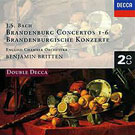
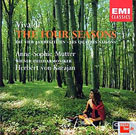
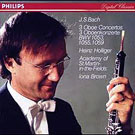
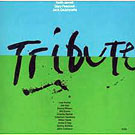
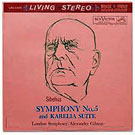
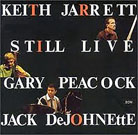
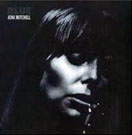
Despite the rising popularity of vinyl records, I guess it will die out with old farts like me. Basically we stick to what we grow up with and for every generation there will be new preferences and quality standards. Some people stick to their old Leicas and celluloid films. I've spent years in the dark chamber developing my film rolls and I tried again a few years ago dusting off my Rolleiflex, but gave it up. With full-frame sensors I can live with all-digital, although seeing 8 x 10 contact prints from the hand of Edward Weston is something I will never forget (8 by 10 format equates some 800 MB (ISO100), more than 20 times of current full frame sensors). To me the best of vinyl reproduction is like these contact prints. They have a flavour and tone that please my senses. More Edward Weston images here.
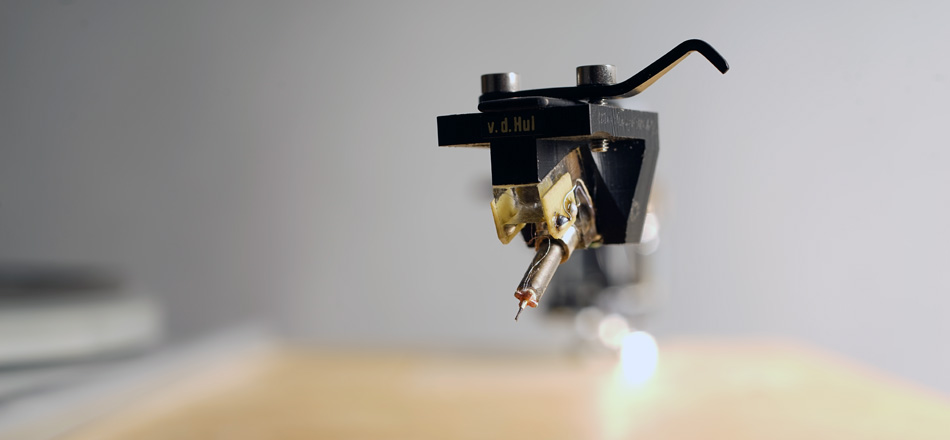
The Colibri must be the most fragile cartridge
ever built! Everything is out in the open, void any resonant housing.
The cartridges:
The reason for having two vdh cartridges is this: I
borrowed a Canary, the headshell carrying the cartridge slipped my
fingers and I broke the cantilever! Never happened
before. Fortunately re-tipping is
very reasonable for vdh cartridges, in my case 425 EUR. Getting
it back it played even better than before and I ended up buying the
Canary. This left me up all night spinning record after record
and hearings things I never hear before.
The level of detail, the explosive
transients, the firmness of the bass, everything was better,
significantly better than anything ever heard before. Thus, I acquired
the top-of-range Colibri despite many warnings that this cartridge was
an ever on-going adjustment exercise to tame the midrange/treble for
aggressiveness and sibilance. I use three things: The standard alignment
template and the small bubble lever following the vdh
cartridges. The latter for VTA and Azimut. That done I've never
experienced any problems setting up a vdh cartridge. Smooth and
clear and no trace of midrange forwardness or sibilance. The vdh
cartridges certainly requires the rest of the system to follow, but the
Grail phono stage, the TRAM line stage, the GlowMaster and ATS4/DTQWT speakers are up to the task.
The Canary and the Colibri doesn't sound exactly the same, but I have a
hard time deciding which is the better although I'm using the Colibri
most of the time. The Colibri may be a tad more neutral than the Canary,
the latter adding a little weight to the bottom end the Colibri doesn't.
I suggest reading Micheal Fremer's review of the Colibri
here. No need
to repeat all things said, I
fully agree on his statements. My Colibri is an XGP, meaning
cross-shaped modulator, gold wires and plastic body (carbon-nylon). The
Canary is an XGP too, the difference is in the magnet system used.
These cartridges are the first I've had doing all four (torture) tracking test
tracks on the HiFiNews test record equally well (side 1, track 6-7-8-9,
used for setting bias).
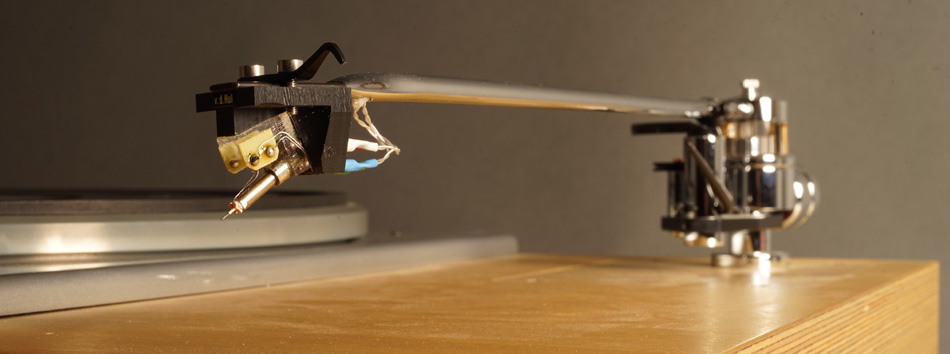
The tonearm:
To get a proper tonearm resonance with the vdh cartridges I
needed a new arm as the 12" Jelko is much too heavy. Tonearm resonance is
the result of the compliance of the cartridge and the effective mass of the
arm. Calculating the total mass (arm + cartridge) is pretty complicated
as we need to know the cartridge's point of resonance and compliance.
The latter is usually given with cartridge specs, but I've never seen
point of resonance. In-depth explanation can be found
here.
Effective mass of tonearms are not a common value given with the tonearm
specs, probably not to scare people away from getting in doubt of
whether their cartridge is suitable for a given arm. Proper arm mass
for a given vdh cartridge can be found at the
Moerch website. Nice! So, with my cartridges and preference for 12"
length I need a Red arm. With the HiFiNews test LP we can test
if reality fits calculation - or actual experience. And it does. With
the Canary I measure a tonearm resonance of 9 Hz and with the Colibri 13
Hz. Right in the range of 9-14 Hz as stated ideal, although this
paper by Poul Ladegaard from 1977 (Brüel & Kjær) suggests 13-18 Hz
ideal. Never ending story - and an everlasting subject for optimisation.
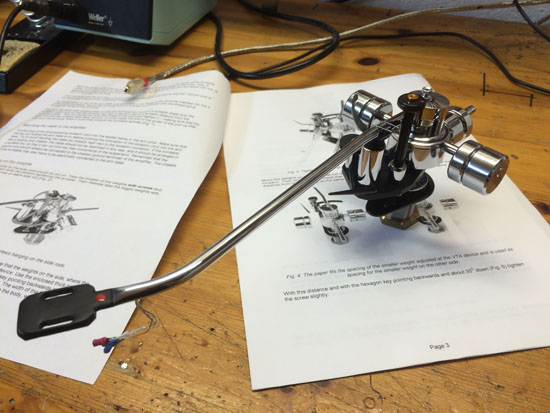
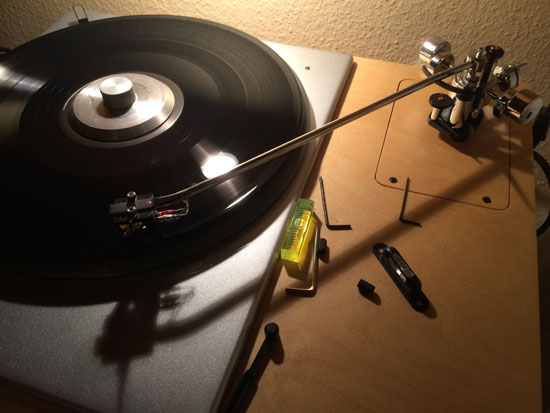
Latest acquisition is the Moerch DP8 tonearm incl. a 9" Precision red
tonearm.
To be mounted on a restored Lenco L78 deck. Link
here.
Obviously I replaced the DP6 with the DP8 and added the 12" arm - and it's explosive!
The DP8 is supposed to improve bass performance - and it does, but I'm
even more impressed with the midrange.
With the Colibri cartridge we're talking control, firmness and ease of
revealing even the most complex passages in music. Never thought this
would happen.
The Phono Stage:
My van den Hull phono stage is a key ingredient in my system
and the kind of components to connect and forget about. There may be
other top-of-the-range phono stages out there, but this phono stage for
its minimum 6 k€ price tag offers a neutrality and tonal quality I think it will
be hard to find elsewhere. My review of the Grail can be found
here. I've tried
the battery operated version as well and couldn't hear any difference,
so I'm not going to invest another 1 k€ for the modification.
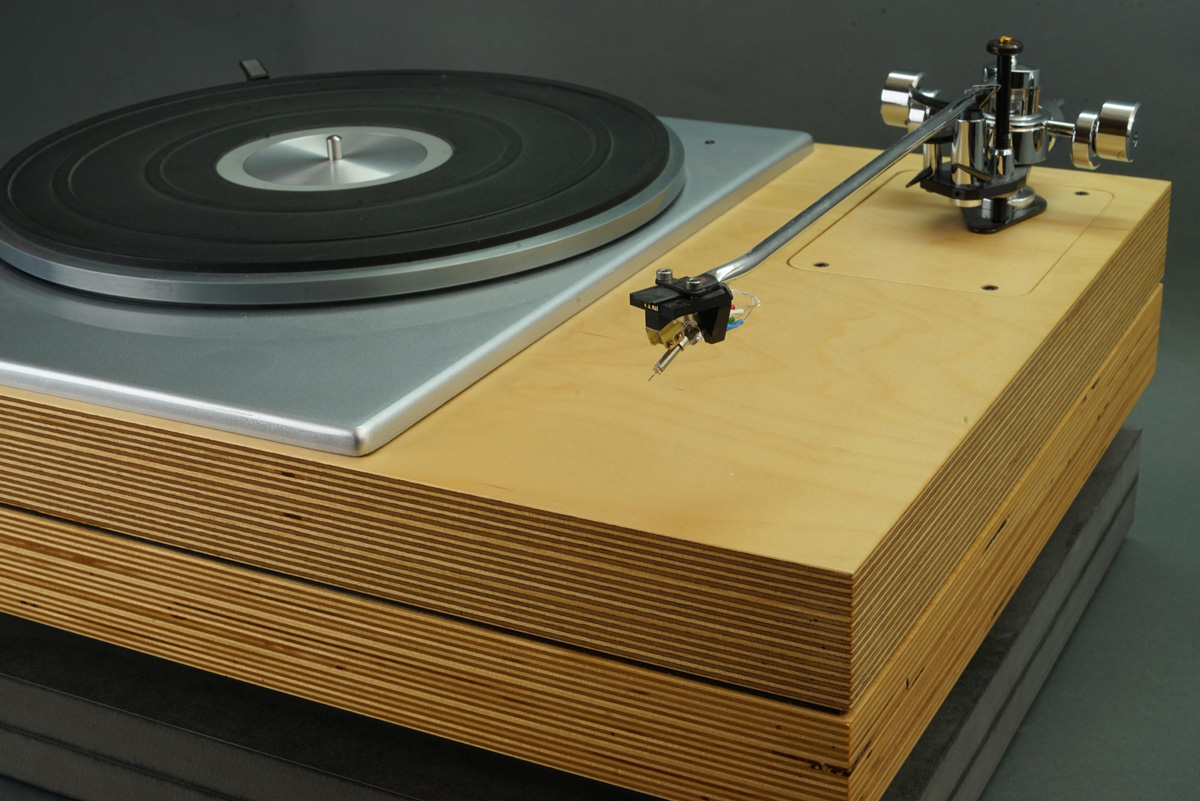
Down Memory Lane
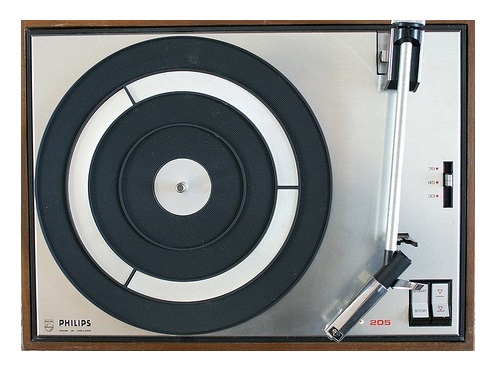
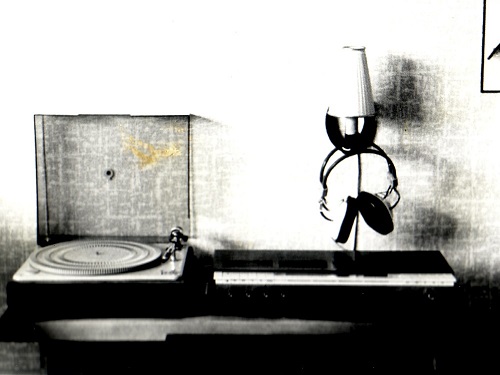
My very first turntable in the Sixties to the left. Actually not this one but quite similar and bought in 1966. Diamond stylus! Yes, extra cost in replacement of a standard sapphire stylus. Together with this Philips I bought two Beatles EPs - if anyone remember what an EP is - and my interest in "hifi" was born. Now, this Philips didn't last long and was soon replaced by a much better B&O Beogram 1000 table and I had a Beomaster 1000 receiver to run my Peerless speaker 3-25 kit.
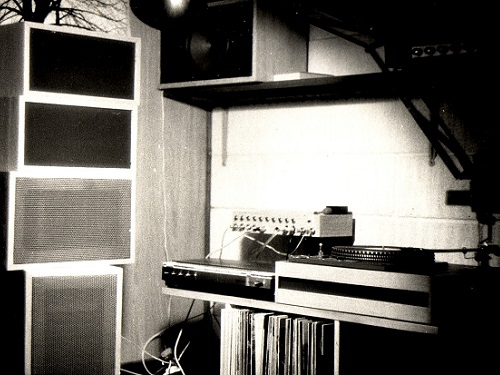
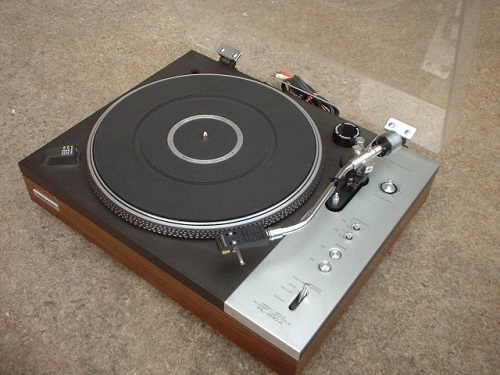
Around 1971 the B&O was replaced by my first serious hifi-investment, a Garrard 401 and 12" SME tonearm. Sorry not having some decent photographs. Shure M75 cartridge and a magnificent Revox A78 amplifier, vastly superior to my B&O Beomaster 1000 receiver seen on photo. Being a student I actually sold it all and didn't have a system for several years. Late Seventies I bough a Pioneer PL510 turntable and some Japanese amp/tuner system. Actually the Pioneer turntable was quite good.
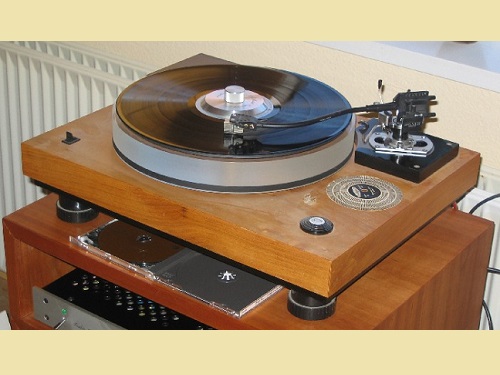
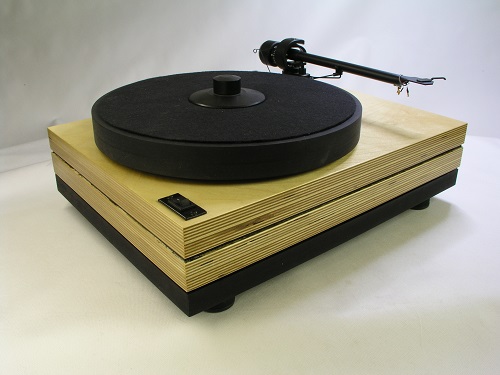
Late Eighties I made the turntable to the left. Had a 40 mm acrylic platter made and having access to a lathe at work I made the spindle. I used Pabst motor, SME Series III tonearm and Ortofon MC30 cartridge. For ten years during the Nienties this turntable was in the attic together with my records. Getting back into vinyl I panicked and bought a ProJect turntable, which was rebuilt to better performance. New platter and plinth. The arm was actually really good. You may wonder why I vent from the 40 mm acylic diy spinner to the "starter" ProJect. My diy thing really wasn't up to the task after years in the attic.
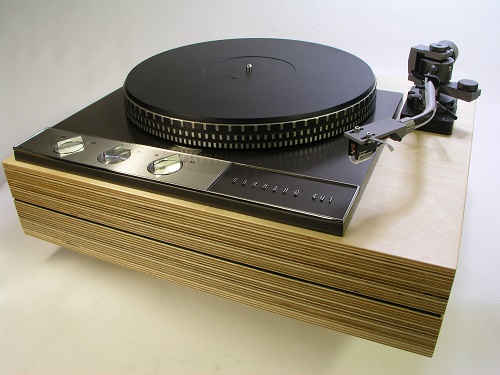
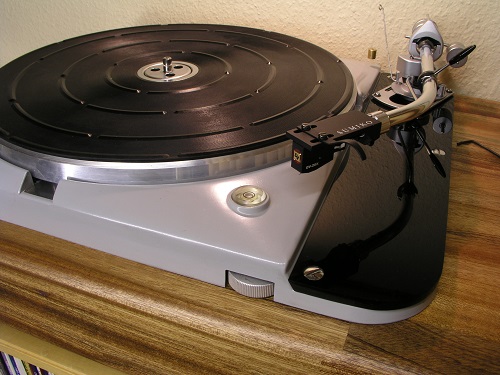
30 years after having sold my Garrard 401 I just had to get one again and I found a really good one on eBay. Fitted with a 9" Jelko SA750 still a stellar performer. This lead me to buying a Dynavector XX2 mkII cartridge and playback quality was on a level I never heard before. I also bought a Thorens TD124 mkII and had some really good times with this all time classic. The 401 had better bass, the Thorens possibly better midrange, although differences were very small and probably could come down to arm and adjustments. The 9" SME came with the deck and was later replaced by the 9" Jelko.
Finale!
A friend of mine pointed to the Lenco L75 deck and I don't think I'll ever get rid of this set-up, which is something you should never say.
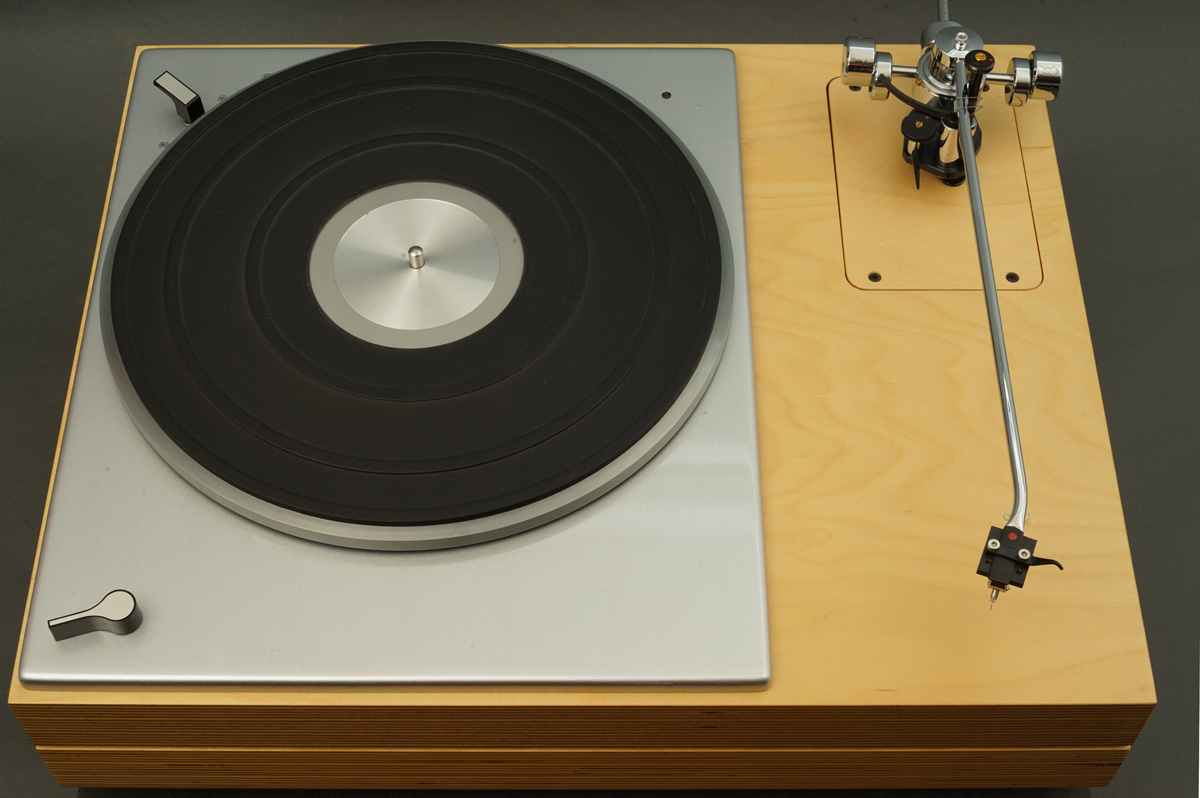
The Lenco deck needs a few things before delivering its best. Obviously the spindle must be cleaned and lubricated. The motor must be taken fully apart for cleaning and lubrication. The resonant top plate must be damped by e.g. a heavy bitumen pad, see details here. Last, but not least, the deck needs a heavy plinth. I made mine from 2 x 3 layers of 15 mm Baltic bitch with 4 mm bitumen pad in between. This makes a chunky beast and some will tell you you need even more, like 20 or 40 kilos. Some will always go to the extreme and claim superior performance, as always never substantiated through measurements, which is really quite easy, but no, page after page of babble. Show us some data on rumble and wow! I think the above will do - and also be pleasing to the eye.
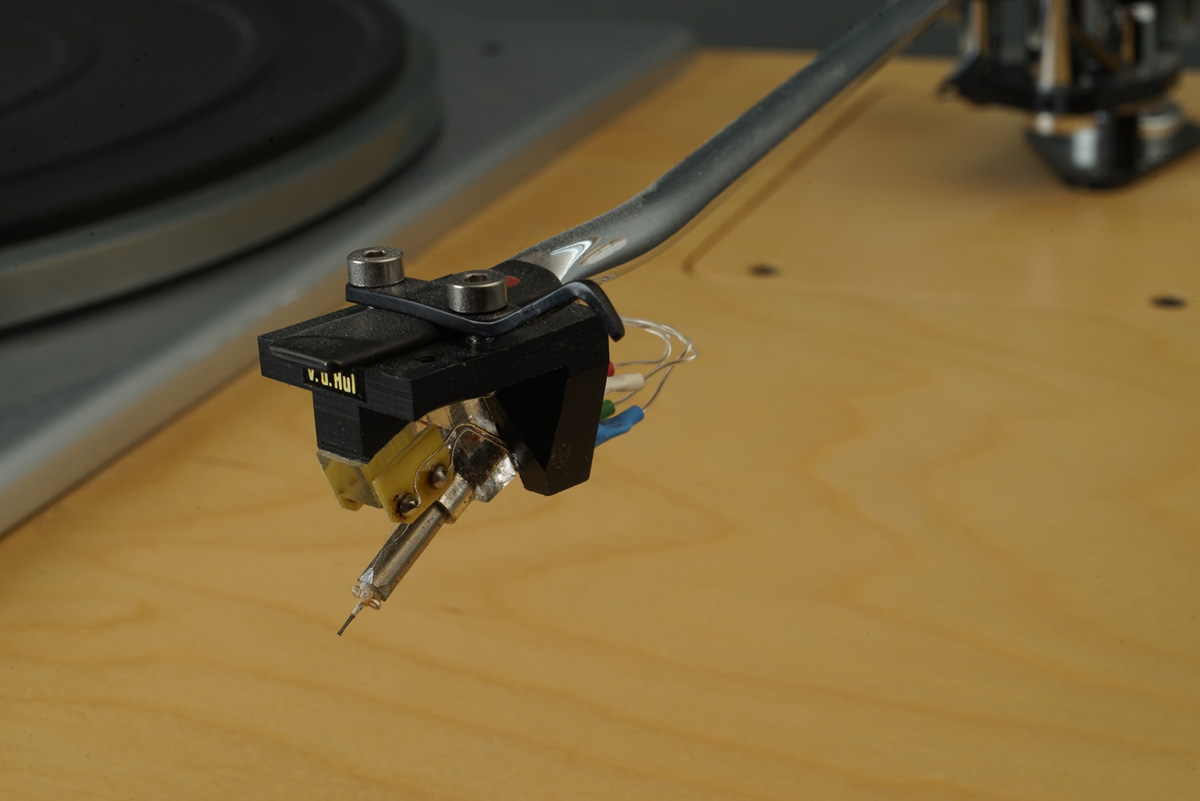
Van den Hull Colibri, probably the most fragile cartridge in the world.
Here's an L75 with Technics EPA 501H tonearm I made for a friend. The 501H really isn't suited for the vdh Canary seen here, rather the Colibri LW cartridge having lower weight compared to the Canary. I just put it on for the photo-shoot. Before taking back the turntable I added some washers to the counterweight to balance the Canary and had a quick listen. I fact I had several hours of listening... darn good sound. The EPA arm is a gem; no wonder they reach high prices on eBay. And you need a couple of extra arms to fit various cartridges. The magnetic damping of the counter balance is excellent. My friend had serious resonance trouble with a 9" Jelko and a light-weight high-compliance cartridge. With the EPA arm all trouble gone.
